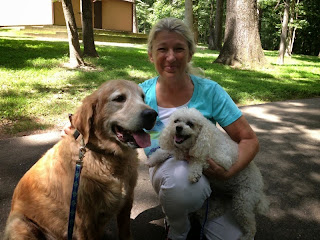Have you noticed your dog’s eyes getting cloudy? They may be suffering from cataracts! Cataracts are an opaque film that forms on the eye, and are a common issue amongst all dog breeds. While not harmful, they do impair your dog’s vision. If your pet is suffering from cataracts, contact our Maryland ophthalmology department today!
Monday, March 31, 2014
What Should You Do When Your Pet Breaks a Bone?
Posted on 1:30 PM by VCA Veterinary Referral Associates
Are you ready if your pet breaks a bone? It’s important to be prepared in order to put yourself in the best position to get them timely help. But what’s the best way to handle a broken bone? We’re here to help!
If you believe your pet has broken a bone, come to our Maryland critical care facility immediately.
VCA-VRA has two board-certified in emergency/critical care, so you know you’re in great hands no matter how serious the break is!
Categories:
Thursday, March 27, 2014
How We Treat Feline Bronchial Asthma
Posted on 2:23 PM by VCA Veterinary Referral Associates
Did you know that feline bronchial asthma is a lot like human bronchial asthma? The symptoms of bronchial asthma in cats are very similar to that in humans, and it’s diagnosed in a very similar way. So when your cat has asthma, how do you treat it? At VCA-VRA, we have a very effective approach to treating feline bronchial asthma. So if you suspect your kitty is suffering from asthma, contact us today to learn more about our treatment.
Categories:
Monday, March 24, 2014
Thursday, March 20, 2014
Patient of the Week: Shelby
Posted on 11:24 AM by VCA Veterinary Referral Associates
Shelby is an 11 year
old lovely golden retriever who was diagnosed with malignant melanoma of the
digit (toe) in April 2011.
Categories:
Wednesday, March 12, 2014
Case of the Month: Moses Bender
Posted on 4:01 PM by VCA Veterinary Referral Associates
Moses is a 9 1/2 year old Golden Retriever who came to see us for a sudden onset of noisy, labored breathing through his nose. Previous treatment with antibiotics and anti-inflammatory corticosteroids had not resolved his symptoms. His veterinarian recommended a consultation, CT scan, and rhinoscopy (procedure involving a video camera on a tiny tube inserted in the nostril) to obtain a diagnosis and plan treatment.
Our CT scanner is very useful for evaluation of the nasal cavity, sinuses, ears, and bones of the jaw and skull. Frequent causes of nasal symptoms in dogs include allergies, inflammatory rhinitis, infection, cancer, and foreign bodies. By combining CT scans and rhinoscopy procedures, we can also take biopsy samples and treat symptoms at the same time. This helps decrease the number of episodes and duration of anesthesia, provides faster and more complete diagnostic answers, and allows treatment to begin sooner. Moses was immediately scheduled for a CT scan and his nasal cavity and sinuses were normal, but an oval object was obstructing the nasopharynx (back of the nasal passages where they open into the throat). During rhinoscopy, this object was visualized and determined to be a lodged almond! The almond was removed and his prognosis for full resolution of symptoms is excellent.
Our CT scanner is very useful for evaluation of the nasal cavity, sinuses, ears, and bones of the jaw and skull. Frequent causes of nasal symptoms in dogs include allergies, inflammatory rhinitis, infection, cancer, and foreign bodies. By combining CT scans and rhinoscopy procedures, we can also take biopsy samples and treat symptoms at the same time. This helps decrease the number of episodes and duration of anesthesia, provides faster and more complete diagnostic answers, and allows treatment to begin sooner. Moses was immediately scheduled for a CT scan and his nasal cavity and sinuses were normal, but an oval object was obstructing the nasopharynx (back of the nasal passages where they open into the throat). During rhinoscopy, this object was visualized and determined to be a lodged almond! The almond was removed and his prognosis for full resolution of symptoms is excellent.
Categories:
Subscribe to:
Posts (Atom)





